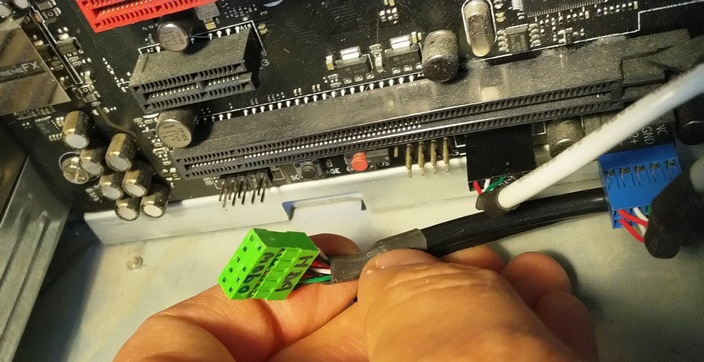


If your USB device works on the rear of your PC, make sure to reseat/reconnect the USB 3.1 Gen 1/USB 3.1 Gen 2 connections on your motherboard. If problems persist, contact the motherboard manufacturer. If this doesn't work still, make sure your motherboard drivers are up to date. Firstly, verify if the device works on the USB ports that are apart of the motherboard on the back. If when connecting a USB device to the front I/O the device does not get recognized or read by Windows, this can indicate a problem with the USB connection. If you have confirmed a defect with our front I/O, please contact our customer service team for assistance. If this did not resolve the issue, this would indicate a defect in your motherboard, we recommend you contact the manufacturer of your motherboard for assistance. If after removing these cables your issue is resolved this would indicate your front I/O is defective. For the H510, this would be a USB 3.1 Gen 1 and USB 3.1 Gen 2 connection, as shown below. If the error persists, then disconnect the internal USB connection (one at a time) from the front I/O to the motherboard. To verify the cause of the issue, firstly disconnect all external USB devices from the system and attempt to start up the system. If you are ever greeted by a USB Device Over Current error like shown above, this is associated with either a defective USB connection on your motherboard or a defective USB device connected to your system. Here we will detail various issues that you may encounter and how to verify if the cause of the issue. Unfortunately in some instances, a defect can sometimes manifest that can result in problems with your I/O ports.


 0 kommentar(er)
0 kommentar(er)
